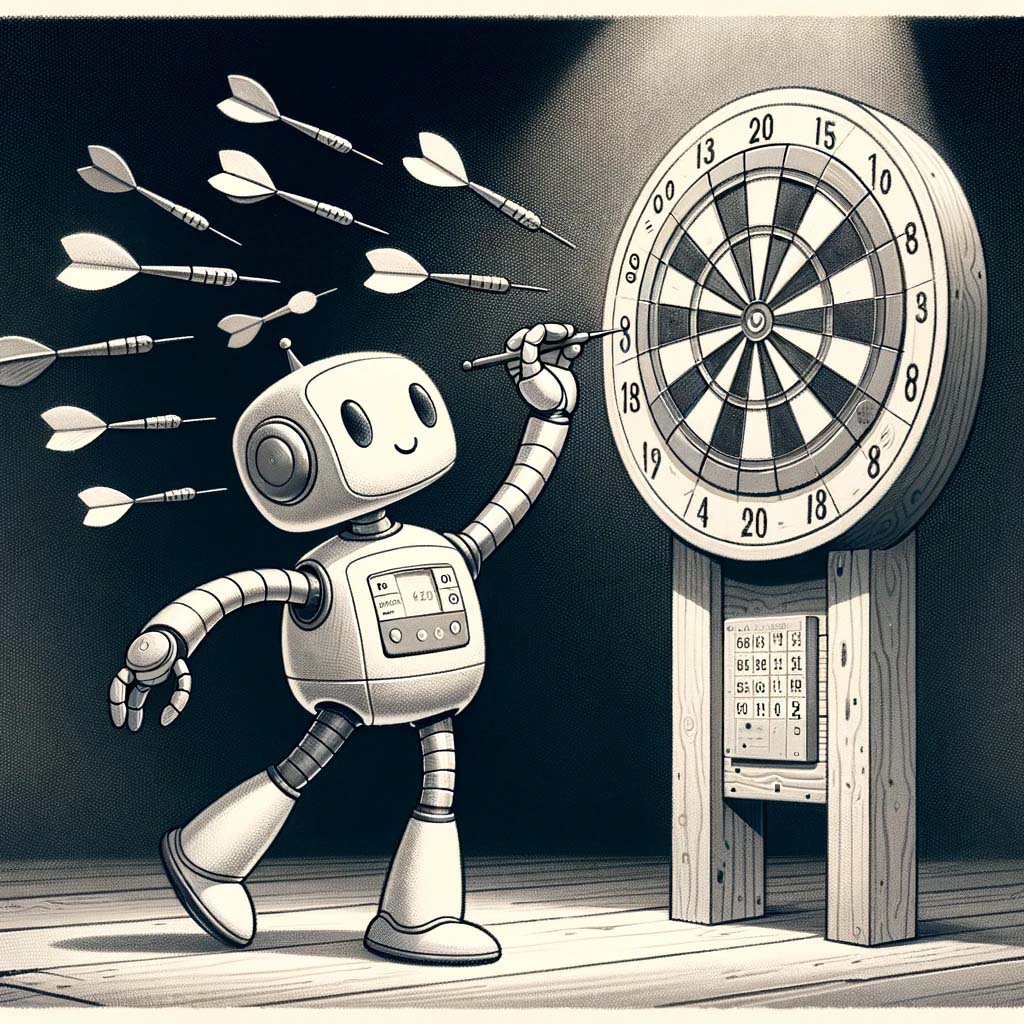Accuracy
Think about playing a game of darts. Your goal is to hit the bullseye, and every time you hit it or get close, you score points. In this game, your accuracy is determined by how many of your throws hit the target area. Similarly, in AI and machine learning, "Accuracy" measures how often the model's predictions are correct.
In Topics: Artificial Intelligence (AI) | Data Analytics (DA) | Data Science (DS) | Fundamental Data Concepts | Fundamental Mathematics and Statistics | Machine Learning (ML) | Supervised Learning

Figure: A playful illustration of "Accuracy".
What is Accuracy?
In AI and machine learning, Accuracy is a metric used to evaluate the performance of a model, specifically how often the model makes the correct prediction. It's calculated by dividing the number of correct predictions by the total number of predictions made.
Key Aspects of Accuracy:
Measure of Correctness: Accuracy measures the proportion of correct predictions (both true positives and true negatives) out of all predictions made.
Simple and Intuitive: It's a straightforward way to understand how well a model is performing.
Limitations: While useful, accuracy alone might not always give the full picture, especially if the data is unbalanced (when one class is much more frequent than the other).
Important in Classification Tasks: Accuracy is most commonly used in classification tasks, where the model predicts whether data belongs to certain categories.
Examples of Accuracy in Use:
Email Spam Filter: In a spam filter, accuracy would measure how often the filter correctly identifies an email as spam or not spam.
Medical Diagnosis: In a tool that diagnoses diseases, accuracy would indicate how often the tool correctly identifies the presence or absence of a disease.
Image Recognition: For a model trained to identify animals in photos, accuracy measures how often it correctly identifies the animal.
Remember:
Accuracy is a fundamental metric in AI and machine learning for evaluating how well a model performs, especially in terms of its ability to make correct predictions. It's like the score in a game that tells you how often you're hitting the target, providing a clear and simple way to assess a model's effectiveness. However, it's also important to consider other metrics for a comprehensive evaluation of a model's performance.
See also: Error Minimization | Evaluation Metric | Loss Function
